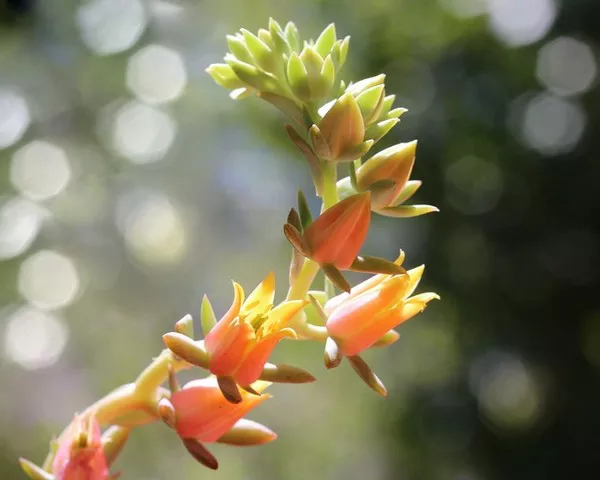Succulents have captivated the hearts of plant enthusiasts worldwide with their unique forms, vibrant colors, and resilient nature. One of the most fascinating aspects of these plants is their ability to propagate from leaves, offering gardening enthusiasts a rewarding and educational journey. Whether you’re a seasoned horticulturist or a novice gardener, learning the art of propagating succulents from leaves can be a fulfilling endeavor that adds an element of creativity to your green space. In this comprehensive guide, we delve into the step-by-step process of succulent leaf propagation, unveiling the secrets to successfully nurturing new plants from a single leaf.
Understanding Succulent Propagation: The Magic of Leaves
Succulent propagation from leaves is an intriguing process that harnesses the plant’s innate ability to regenerate and thrive under specific conditions. Succulents store water in their fleshy leaves, allowing them to survive in arid environments. This unique feature also enables them to develop roots and ultimately grow into new plants through leaf propagation.
Selecting the Right Leaf: The Starting Point
The journey to successful succulent propagation begins with the careful selection of a healthy leaf. Choose a mature leaf that is plump and undamaged. Gently twist the leaf from the stem, ensuring it separates cleanly without tearing. It’s essential to allow the leaf to callous over for a day or two before proceeding to the next steps. This callousing process minimizes the risk of rot when the leaf is planted.
Preparing the Propagation Medium: The Right Mix
A well-draining propagation medium is vital for the successful growth of new succulent plants. Prepare a mix that consists of equal parts of potting soil and perlite or coarse sand. This blend promotes proper aeration and prevents waterlogged conditions that could hinder root development.
Planting the Leaf: The Key Steps
Place the Leaf on the Medium: Gently press the calloused end of the leaf into the propagation medium, ensuring that it makes good contact without burying the entire leaf. Position the leaf in a way that allows the calloused end to be partially buried while keeping the rest of the leaf above the surface.
Provide Adequate Light: Place the planted leaf in an area with bright, indirect sunlight. Avoid exposing the leaf to harsh, direct sunlight, as this could lead to sunburn.
Watering: Mist the propagation medium lightly to moisten it. It’s essential to maintain a slightly damp environment for the leaf to encourage root growth. However, avoid overwatering, as excessive moisture can cause rot.
Root Development and Growth: Patience Pays Off
The journey from a single leaf to a flourishing succulent plant requires patience and attentive care. Over the next few weeks, you will notice small roots emerging from the calloused end of the leaf. This is a promising sign of successful propagation. As the roots develop, a tiny rosette of leaves will also begin to emerge from the base of the leaf.
Transplanting New Plants: Nurturing the Next Generation
Once the emerging rosette has grown several sets of leaves and established a root system, it’s time to transplant the new succulent into its own container. Carefully remove the new plant from the propagation medium, ensuring that you don’t damage the delicate roots. Plant it in a well-draining potting mix suited for succulents and provide it with adequate sunlight and care.
Tips for Success: Green Thumbs Unite
Temperature: Maintain a temperature range of 65°F to 75°F (18°C to 24°C) for optimal root development. Avoid exposing the propagating leaf to extreme cold or heat.
Watering Frequency: Water sparingly but consistently. Mist the propagation medium whenever it dries out, ensuring that it remains slightly moist.
Choosing the Right Succulent: Not all succulents propagate well from leaves. Varieties like Echeverias, Sedums, and Graptopetalums are among the most successful choices for leaf propagation.
Leaf Orientation: Plant the leaves with the calloused end facing downward to encourage the growth of roots and new rosettes.
Avoid Disturbing the Process: Once you’ve planted the leaf, refrain from moving or disturbing it unnecessarily. This will allow the roots and new plant to develop without disruption.
In Conclusion: Cultivating New Life
Succulent propagation from leaves offers a glimpse into the remarkable world of plant regeneration and growth. Through patience, care, and attention to detail, you can witness the transformation of a single leaf into a vibrant, thriving succulent plant. As you master the art of leaf propagation, you’ll not only enrich your understanding of succulents but also cultivate a deeper connection with the natural world around you. So, embark on this green journey, armed with knowledge and a sense of wonder, as you nurture new life from the leaves of these captivating plants.


